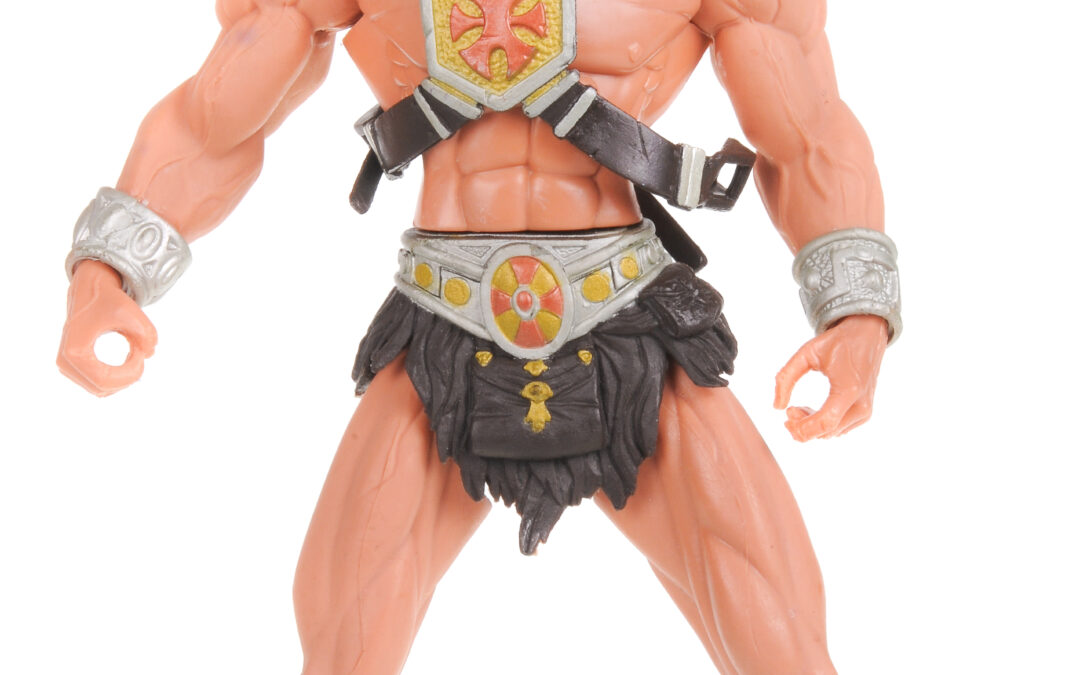When you were a kid did you ever have your eye on that one toy that you knew would make your childhood magical? For me, I remember the first time I saw a He-man figurine. It was bigger than traditional GI Joe toys, and came with his tiger, Cringer. Adding a friendly tiger who could turn fierce when needed was the perfect addition. The marketing department at Mattel were on top of their game! When I saw these toys at my friend’s house, it looked like so much fun, and boy was I ever excited to get a chance to play with them.
I remember the day that I got a chance to go play with my friend and we decided to play He-man and Skeletor. I was so stoked; this was a day I would remember for the rest of my life (not untrue). Unfortunately, just because the toys looked fun, it did not mean that they were fun, at least they were not for me.
While I had my ideal magical childhood dreams dashed to pieces, I quickly regrouped and went outside to play kickball. Thank goodness kids, and their emotions, are resilient.
Did my experience with He-man mean that I did not want to play with any toys? No, I loved playing with toys, I just realized that I played differently and preferred to be outside kicking a ball, rather than having Cringer and He-man defeat Skeletor in yet another epic battle of smashing plastic toys against one another, accompanied by epic battle sound effects created by the mouths of prepubescent boys.
You may wonder what this has to do with e-commerce, hear me out.
Just as there are specific toys that are developed and marketed to specific types of kids, there are specific types of e-commerce developed to serve different markets (B2B, B2C and even C2C). And just as my dreams were shattered when I tried to use a toy that was not created for my personality type, a business can be impacted negatively if they try to use an e-commerce platform that is developed for a different type of business transaction.
In our personal lives we no longer have to wait for our mom to take us to K-mart to pick up the latest He-man toy. We can jump online, order it from various sellers, and have it delivered to our doorstep the next day. If we can make purchases so easily in our personal lives, why do we see a lag in online purchases for B2B transactions?
Is this pattern caused by a lack of B2B providers giving their customers the ability to purchase online? Maybe. Is it because B2B refuse to adapt to new technology and prefer to order via fax? I do not think so. I’d argue that the reason more B2B buyers aren’t using e-commerce is because sellers aren’t using e-commerce tools that are built to meet the needs of the buyers.
A major reason that B2B sellers are not seeing more transactions on their online platforms is because they are approaching e-commerce the same way that a B2C company might approach e-commerce.
B2C focuses on the customer, getting them to fall in love with a product through beautiful imagery, single sales transactions, and an easy-to-use shopping cart that facilitates one-time credit card purchases. They are the highly skilled Mattel marketers that make it look fun, but lack the right kind of substance for B2B sellers.
In B2B transactions functionality is key. While you still want your site to look good, having functionality tailor built for B2B purchasers is extremely important. Some of the behaviors of B2B buyers that differ from B2C buyers include: purchasing stock time and again instead of one-off transactions, purchasing on terms instead of with a credit card, using pricing based on negotiated contracts, scheduling delivery dates for perishable goods, etc.
There are also B2B e-commerce requirements that are specific to B2B sellers, such as the following: restricting product view from certain buyers, managing multiple pricing levels, managing delivery dates based on delivery routes, etc.
In short, there are needs that B2B buyers and sellers alike have, that aren’t being met by a traditional B2C marketplace. And without these needs being met, they revert back to what works, sending a good ol’ fax, or e-mail, not because it is the preferred way, but because a better way hasn’t been presented to them yet.
This causes several issues. For the seller, it creates inefficiencies in operations because they now need to designate at least one employee to be responsible for entering orders that they received via fax. This is just the tip of the iceberg in operational tasks that can be avoided if you select the right e-commerce platform.
The issue that it causes to the buyer is that it creates a purchasing experience with a lot of friction. Sending a fax is not convenient. It is harder to file and store historical purchase data this way. And in the end, they would probably still need additional confirmation that the order was received, so the fax is accompanied with at least one more form of communication, either a phone call or e-mail. This method is chalk full of inefficiencies.
Finding a B2B specific webstore is critical to both your business operations, as well as your customers experience. There are a few providers of these sites at varying price levels. In investigating which e-commerce provider to go with, the following criteria are worth asking about.
What does the integration look like between the webstore and your accounting software? With the appropriate integration you can eliminate the dual data entry of customer info, inventory, and pricing on both your ERP as well as your webstore. If the e-commerce solution you are looking at doesn’t integrate, you should keep looking for one that does.
What B2B specific features are offered? You might want to ask about the ability to order off of a template, having a quick pick option, being able to view custom pricing, being able to self-serve through access to historical purchase/invoice info, etc..
If you are currently using Fishbowl, Accumatica, Xero or QuickBooks as your accounting software, Kinein excels in being able to help you create a B2B specific webstore, that is deeply integrated with your accounting software.
Whatever you do, don’t settle for a He-man experience for your customers. If you are committed to providing an online purchasing option for them, make sure it is a platform that serves both you (seller), as well as your customers (buyer) equally well.

